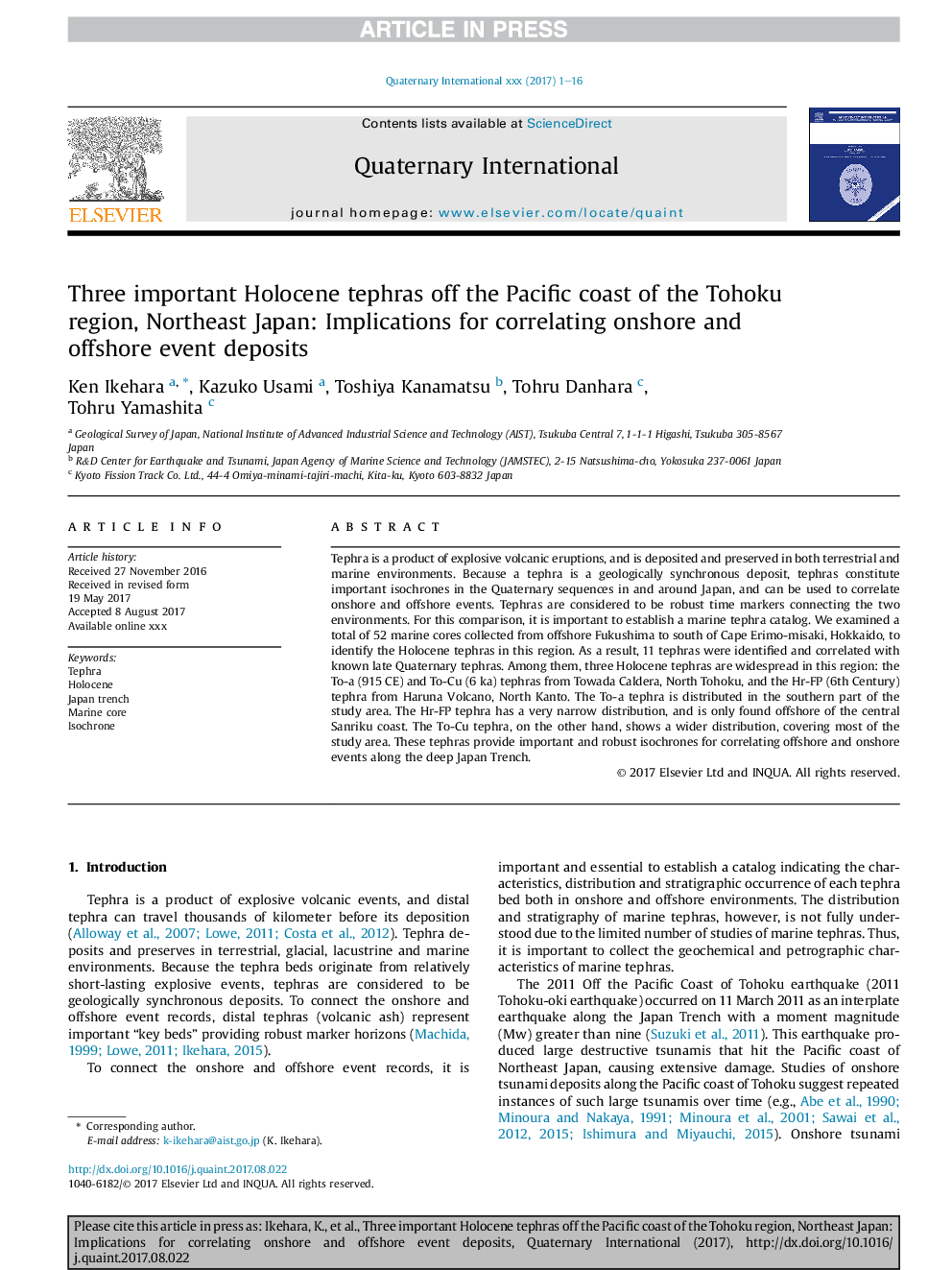| Article ID | Journal | Published Year | Pages | File Type |
|---|---|---|---|---|
| 7451296 | Quaternary International | 2017 | 16 Pages |
Abstract
Tephra is a product of explosive volcanic eruptions, and is deposited and preserved in both terrestrial and marine environments. Because a tephra is a geologically synchronous deposit, tephras constitute important isochrones in the Quaternary sequences in and around Japan, and can be used to correlate onshore and offshore events. Tephras are considered to be robust time markers connecting the two environments. For this comparison, it is important to establish a marine tephra catalog. We examined a total of 52 marine cores collected from offshore Fukushima to south of Cape Erimo-misaki, Hokkaido, to identify the Holocene tephras in this region. As a result, 11 tephras were identified and correlated with known late Quaternary tephras. Among them, three Holocene tephras are widespread in this region: the To-a (915 CE) and To-Cu (6 ka) tephras from Towada Caldera, North Tohoku, and the Hr-FP (6th Century) tephra from Haruna Volcano, North Kanto. The To-a tephra is distributed in the southern part of the study area. The Hr-FP tephra has a very narrow distribution, and is only found offshore of the central Sanriku coast. The To-Cu tephra, on the other hand, shows a wider distribution, covering most of the study area. These tephras provide important and robust isochrones for correlating offshore and onshore events along the deep Japan Trench.
Related Topics
Physical Sciences and Engineering
Earth and Planetary Sciences
Geology
Authors
Ken Ikehara, Kazuko Usami, Toshiya Kanamatsu, Tohru Danhara, Tohru Yamashita,
